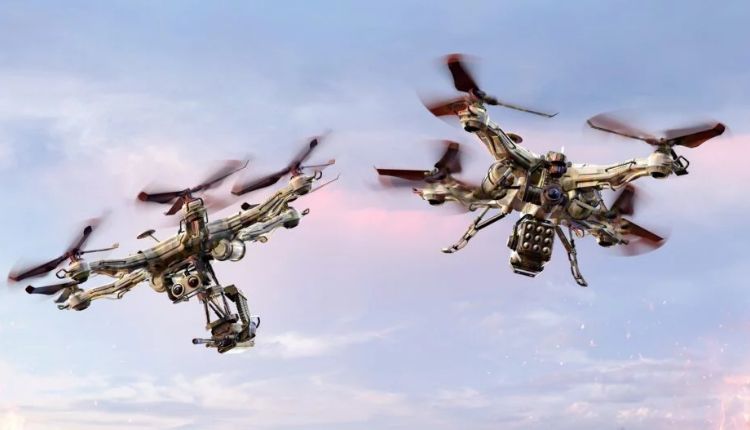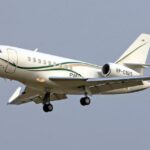
Technology
As drone technology continues to evolve, the concept of swarm intelligence is redefining how Uncrewed Aerial Vehicles (UAVs) operate in various industries. Drone swarm technology enables multiple UAVs to communicate and collaborate autonomously, enhancing efficiency, scalability and adaptability in fields such as agriculture, military operations and large-scale surveying. Sonoran Desert Institute (SDI), which is accredited by the Distance Education Accrediting Commission (DEAC), highlights that by leveraging Artificial Intelligence (AI), machine learning and real-time data sharing, drone swarms are transforming aerial operations, paving the way for a new era of automation and coordination.
The rapid advancements in drone swarm technology have led to a shift in how UAVs are utilized across different sectors. By working in tandem, these autonomous systems unlock new possibilities that were previously unattainable with single-drone operations. From improving precision in agricultural tasks to enhancing military defense strategies, the ability of drones to operate cohesively as a networked unit is revolutionizing aerial applications. To better understand the impact and potential of drone swarms, it is essential to explore the fundamental principles that govern their operation and the key technological components that enable their success.
Understanding Drone Swarm Technology
Drone swarms consist of multiple UAVs working together in a coordinated manner, mimicking behaviors seen in natural swarms like flocks of birds or schools of fish. Unlike traditional drones that operate independently, swarming UAVs rely on distributed intelligence, allowing them to function cohesively as a unified system. Through real-time communication and data exchange, these drones can perform tasks autonomously without centralized control, making them highly effective in dynamic environments.
Key components of drone swarm technology include:
- Swarm Intelligence Algorithms: AI-driven algorithms allow drones to make collective decisions, adapt to environmental changes and optimize task distribution.
- Mesh Networking: This technology enables drones to communicate with one another, share sensor data and maintain situational awareness.
- Autonomous Navigation: Machine learning models assist drones in obstacle avoidance, flight path optimization and efficient coordination.
- Cloud and Edge Computing: Facilitates real-time data processing and operational control without over-reliance on human operators.
Applications of Drone Swarm Technology
Agriculture: Enhancing Precision Farming
Drone swarms are revolutionizing agriculture by enabling more efficient and precise farming practices. By working in tandem, multiple UAVs can cover large areas quickly, optimizing crop monitoring, irrigation and pesticide application.
- Crop Health Monitoring: Drones equipped with multispectral imaging sensors can analyze plant health and detect diseases at an early stage.
- Automated Spraying: Swarm-enabled UAVs can distribute pesticides or fertilizers precisely, reducing waste and minimizing environmental impact.
- Irrigation Management: Coordinated drones assess soil moisture levels and help optimize water usage, improving sustainability in farming operations.
By utilizing drone swarms, farmers can increase yields, reduce labor costs and enhance agricultural efficiency, ultimately contributing to sustainable food production.
Military and Defense: Tactical Advantages
In military operations, drone swarms offer strategic advantages by enabling coordinated surveillance, reconnaissance and combat missions. Unlike single-drone deployments, swarms provide redundancy, resilience and operational flexibility.
- Surveillance and Reconnaissance: Swarms can conduct wide-area surveillance, monitor enemy activities and provide real-time intelligence without exposing human personnel to danger.
- Electronic Warfare: Drone swarms equipped with jamming capabilities can disrupt enemy communications and turn off defense systems.
- Coordinated Strikes: In combat scenarios, multiple UAVs can work together to neutralize threats efficiently while reducing collateral damage.
- Search and Rescue Operations: In battlefield settings, drone swarms can locate and assist injured soldiers by rapidly scanning large territories.
By integrating drone swarms into military strategies, armed forces can enhance operational effectiveness and reduce risks to human soldiers.
Large-Scale Surveying and Infrastructure Monitoring
Drone swarm technology enhances surveying and infrastructure assessment by enabling multiple UAVs to collect data simultaneously across large areas.
- Mapping & Surveys: Swarm-enabled drones generate high-resolution 3D maps for urban planning and geological studies.
- Infrastructure Inspections: Coordinated UAVs with LiDAR and infrared sensors to detect structural issues in bridges and pipelines.
- Disaster Response: Drone swarms assess damage, locate survivors and assist emergency teams.
This approach improves safety, reduces costs and enhances decision-making in urban and industrial projects.
Technological Advancements in Drone Swarming
As drone swarms gain traction, continuous technological advancements are enhancing their functionality and effectiveness:
- AI-powered decision-making: AI-driven drones can autonomously analyze environmental conditions and adjust their behavior in real-time.
- 5G and Beyond: High-speed connectivity enables seamless communication between drones, ensuring faster data exchange and improved coordination.
- Blockchain for Secure Operations: Decentralized ledger technology enhances data integrity and security, reducing the risk of cyber threats.
- Bio-Inspired Algorithms: Machine learning models mimic natural swarm behavior, allowing drones to navigate and adapt to complex environments with greater precision.
- Autonomous Charging and Energy Efficiency: Advancements in wireless charging and solar-powered UAVs extend operational endurance, making long-duration missions feasible.
These innovations contribute to making drone swarms more adaptable, intelligent and capable of handling a wide range of real-world applications.
Challenges and Ethical Considerations
Despite their advantages, drone swarms present several challenges and ethical concerns that need to be addressed for responsible deployment:
- Regulatory Compliance: Many countries have strict regulations governing UAV operations, requiring policymakers to establish frameworks that accommodate swarm technology.
- Privacy and Security Risks: The ability of drone swarms to conduct mass surveillance raises concerns about data privacy and misuse.
- Autonomous Decision-Making Risks: AI-powered drones must be designed with fail-safe mechanisms to prevent unintended consequences.
- Environmental Impact: Increased UAV activity may contribute to noise pollution and energy consumption, necessitating sustainable development approaches.
- Cybersecurity Threats: Ensuring secure communication channels is crucial to prevent hacking or interference that could compromise drone operations.
To mitigate these risks, collaboration between governments, technology providers and research institutions is essential to establish ethical guidelines and robust security protocols.
Future Prospects and Industry Adoption
The future of drone swarm technology is promising, with growing interest from industries, governments and research institutions worldwide. As AI, edge computing and networking technologies advance, drone swarms will become more capable of handling complex missions with minimal human intervention.
- Smart Cities: Drone swarms will support urban management by monitoring traffic flow, detecting environmental pollution and assisting in emergency response.
- Autonomous Logistics: Companies like Amazon and UPS are exploring swarm-based UAV delivery systems to optimize last-mile logistics.
- Wildlife Conservation: Swarms can be deployed for habitat monitoring, poaching prevention and environmental research in remote regions.
- Space Exploration: NASA and other space agencies are investigating the use of drone swarms for planetary exploration and asteroid mapping.
Sonoran Desert Institute recognizes that as industries embrace this technology, the potential for drone swarms to revolutionize operations across multiple sectors will continue to expand.
Drone swarm technology is redefining collaborative aerial operations by enabling autonomous coordination, intelligent decision-making and large-scale task execution. With applications spanning agriculture, military defense, surveying and beyond, drone swarms offer unparalleled efficiency and adaptability in modern aerial operations.
While challenges such as regulatory compliance, security risks and ethical concerns must be carefully managed, ongoing advancements in AI, networking and automation are shaping a future where drone swarms play a pivotal role in industries worldwide. By fostering innovation and responsible deployment, organizations and governments can unlock the full potential of swarm technology, driving progress and efficiency in the evolving landscape of uncrewed aerial systems.









